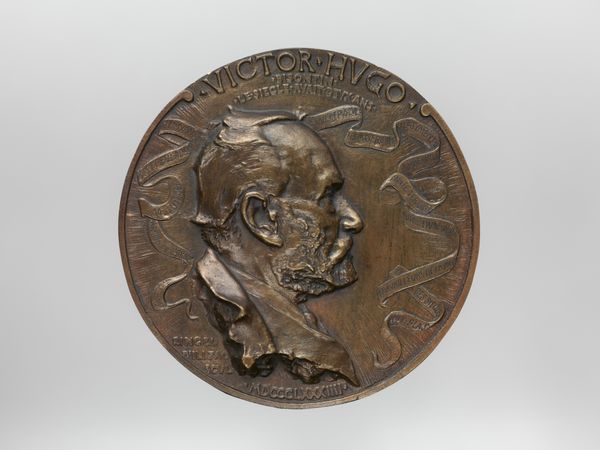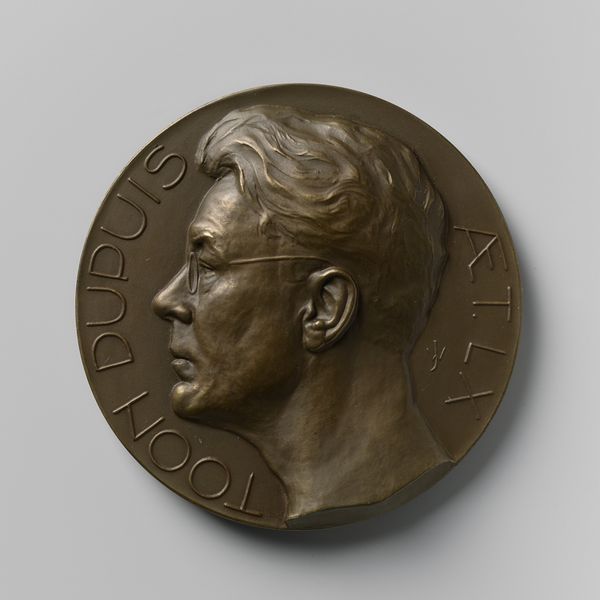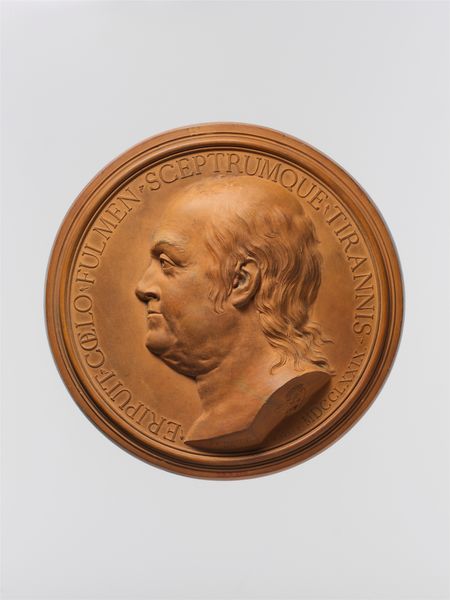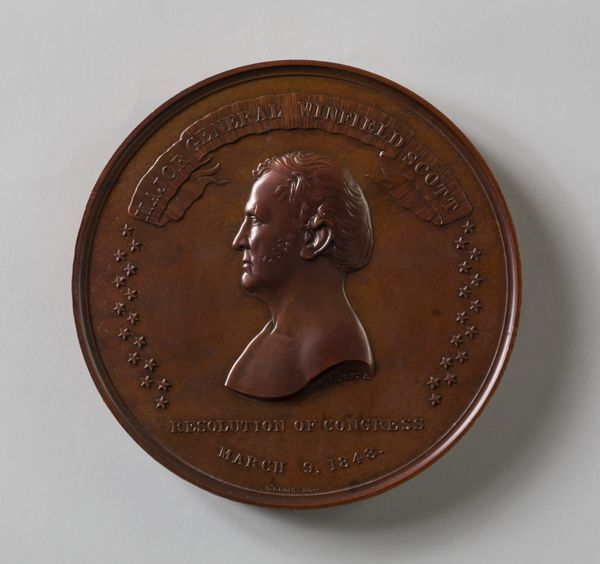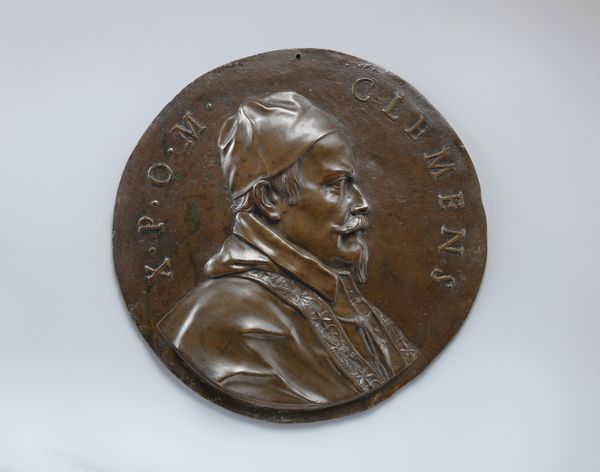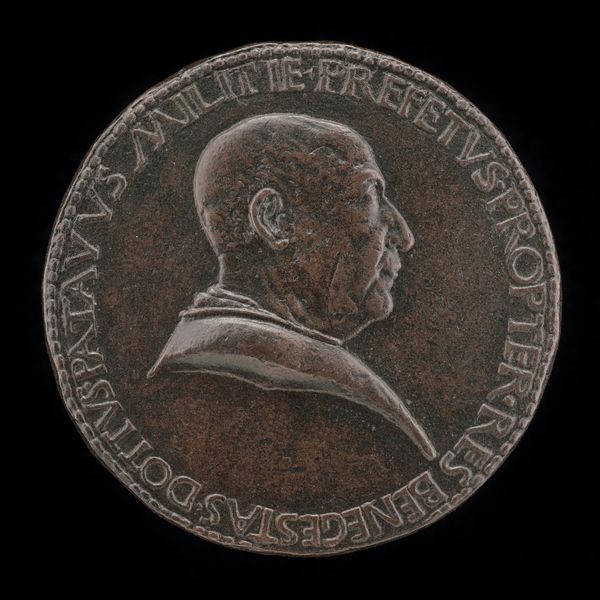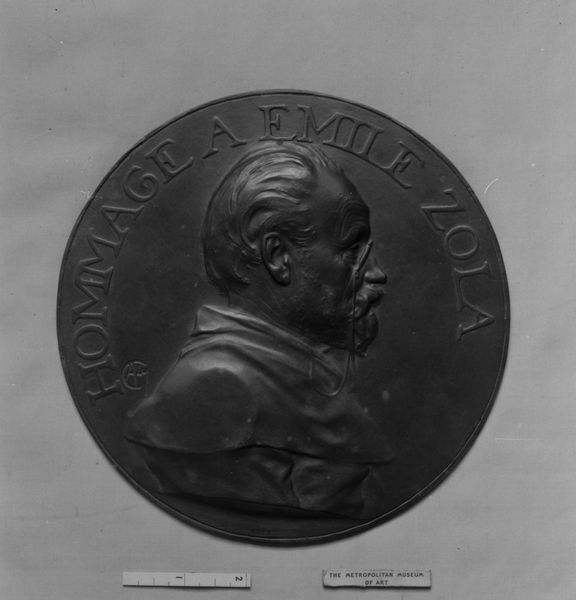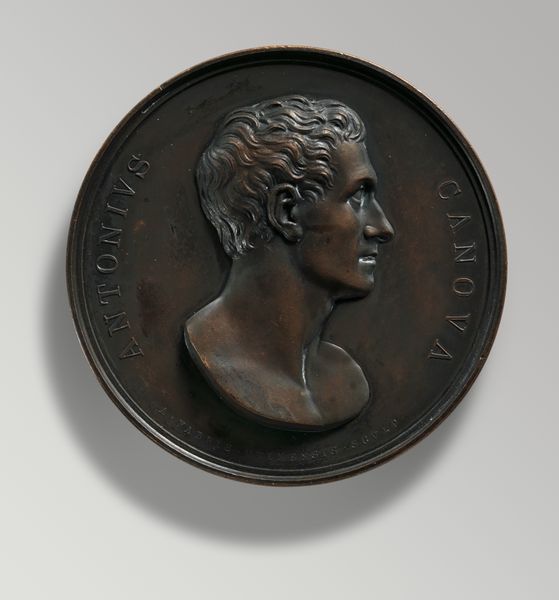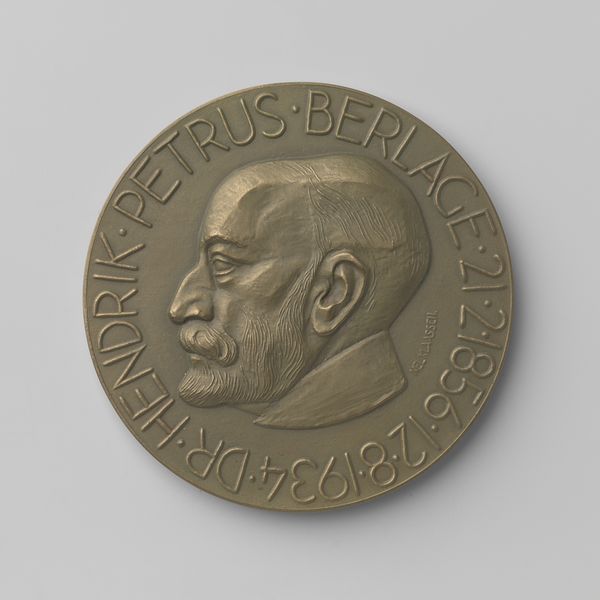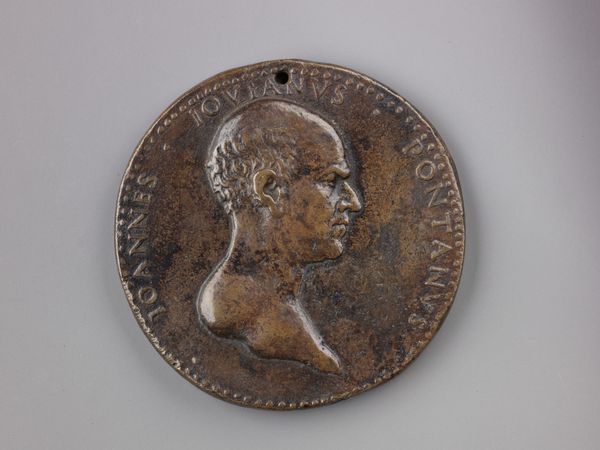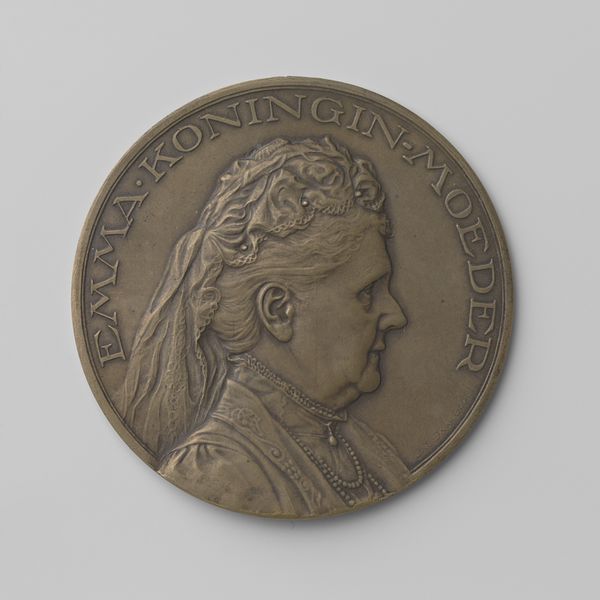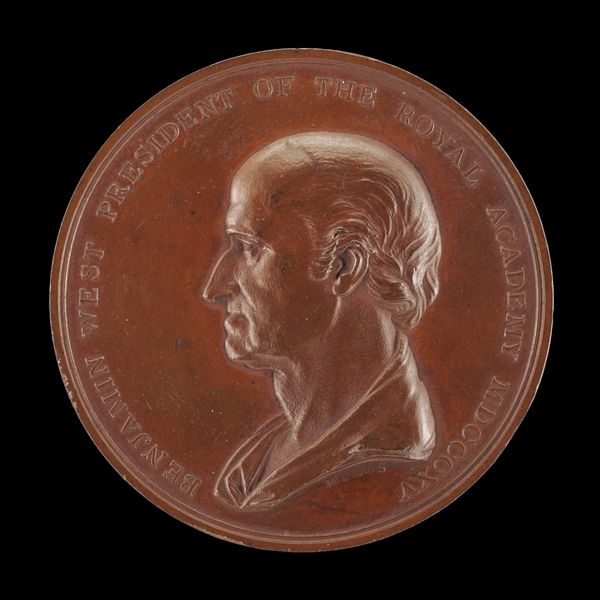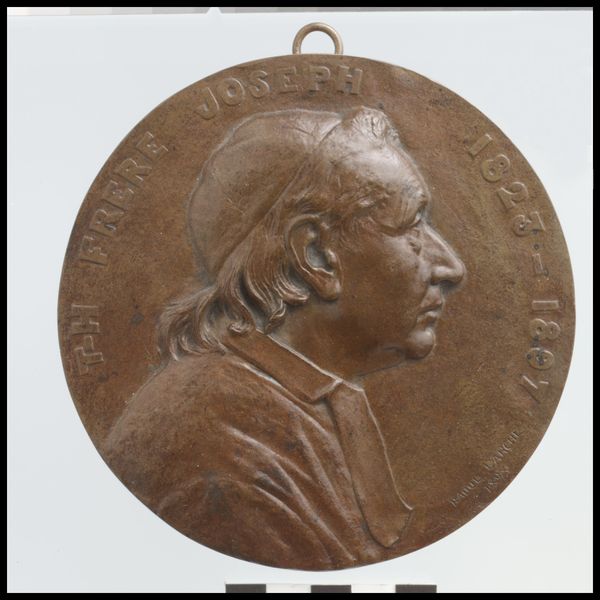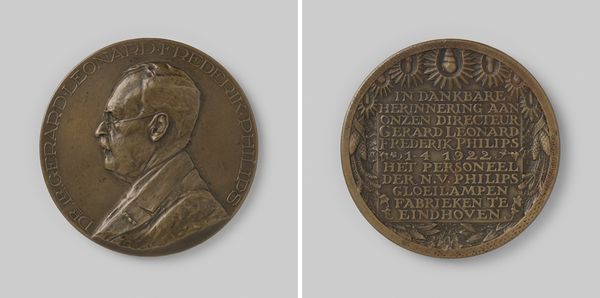![Rodolfo Siviero [obverse] by B. Catarzi](/_next/image?url=https%3A%2F%2Fd2w8kbdekdi1gv.cloudfront.net%2FeyJidWNrZXQiOiAiYXJ0ZXJhLWltYWdlcy1idWNrZXQiLCAia2V5IjogImFydHdvcmtzLzk0YjIwZGJmLTdhMjQtNDEwNi1hNmJlLTBkNDU0MTYyNGVkYy85NGIyMGRiZi03YTI0LTQxMDYtYTZiZS0wZDQ1NDE2MjRlZGNfZnVsbC5qcGciLCAiZWRpdHMiOiB7InJlc2l6ZSI6IHsid2lkdGgiOiAxOTIwLCAiaGVpZ2h0IjogMTkyMCwgImZpdCI6ICJpbnNpZGUifX19&w=1920&q=75)
metal, bronze, sculpture
portrait
medal
metal
sculpture
bronze
sculpture
Dimensions: overall (diameter): 29.9 cm (11 3/4 in.)
Copyright: National Gallery of Art: CC0 1.0
Curator: Here we have a bronze medal featuring Rodolfo Siviero. The artist is B. Catarzi, and the work, a portrait, seems to capture something very specific in Siviero's persona. Editor: Bronze, of course, speaks to ideas of legacy, of permanence, doesn't it? I’m immediately struck by how solemn it feels, almost like a coin marking someone who is more of a public figure than an intimate acquaintance. Curator: You know, I see that solemnity too, but I wonder if it's just the weight of history pressing on us now. Look at the clean lines, the slight upturn of his mouth. There's a real sense of quiet determination there as well, almost playful. Editor: It's cleverly made, for sure. But who was Siviero? The medal itself becomes part of the narrative, reflecting a culture of commemoration, of turning individuals into objects. Was this commissioned? What statement was Catarzi intending to make about value, about remembrance? Curator: Siviero was an art historian, but more fascinatingly, he was an Italian secret agent during WWII, dedicated to recovering art stolen by the Nazis. The intensity, I now wonder, comes from him operating underground at that time. Imagine the stories etched into those lines! The shadow under his brow... that tells of sleepless nights fueled by his passion for art. Editor: Then this changes my perspective slightly, knowing about his clandestine activities makes this a really curious object. It raises interesting questions. Did Catarzi carefully manipulate this hard metal as an emblem for Siviero’s dogged work? We are speaking of material that had so many practical and brutal purposes being pressed into service to reflect someone involved in a battle. Curator: Exactly! Thinking about the coldness of the bronze itself is very telling, and his sharp profile. Editor: Now knowing what he did... you look into his eyes—or rather, the bronze rendering of his likeness—and it has to conjure a web of complexities beyond his physical resemblance. Fascinating what history and narrative does to our perception of the artwork itself and our interaction with it! Curator: Agreed. It transforms the metal, doesn't it? Into something far more intricate. It moves us to think of both art and its maker, how that union itself forges history into beauty!
Comments
No comments
Be the first to comment and join the conversation on the ultimate creative platform.
